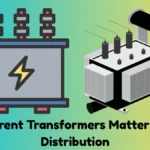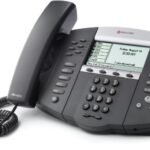Before Cat 7 vs. Cat 7a cable become an ultimate option for network speed, Cat 6 is one decent Ethernet cable worthy to be considered.

One of the well established cable standards today that supports Gigabit Ethernet is Category 6 cable. It facilitates networks from devices by means of providing data transfer at a very high speed rates.
In terms of performance, Cat 6 cable can be acknowledged as excellent for running at gigabit speeds if other network cables are also running on the same speed.
For you to know whether this type of Ethernet cable matches your network or cable infrastructure needs, check out the different pros and cons of a Category 6 cable.
What Is Category 6 Cable?
It is a twisted pair type of cable that supports Gigabit Ethernet networks. Cat 6 cable was specified as a part of the Telecommunication Industries Association (TIA) and Electronics Industries Association (EIA).
This type of cable is shielded which makes them suitable when attenuation interference happens. It also denser and can eliminate any interference.
Oftentimes, Cat 6 cable is used for computer networks that have 1000 Mbps speed of data transfer or even higher. Some characteristics of this cable that makes it ideal are the following.
- It can provide a 250 MHz bandwidth with 10 Gbps speed and can extend to a length of 100 meters.
- It comprises of four copper wire pairs that are completely applied to transfer data.
- Has an updated crosstalk protection than the preceding twisted pair Category cable types.

Pros
1) Bandwidth
Category 6 cable wires is capable of transmitting 400 MHz over 60 yards. During the transmission, it can reduce crosstalk and attenuation interference. Cat 6a – an enhanced version of Cat 6 – is capable of transmitting 500 MHz, this is twice the bandwidth being transmitted from Cat 6 cable.
Both Category 6 and Category 6a are a bit larger than the preceding Ethernet cables. They can be connected using a special modular adapter, which will link Cat 6 or Cat 6a cables to a network.
2) Has Uniform Structure with Category 5 Cable
In terms of structure, Cat 6 has similar composition to Cat 5 and Cat 5e cables. These three have eight wires that are interlocked and twisted altogether to create four wire pairs.
The only apparent distinction is that a single pair of wires inside Cat 6 cable is kept from mixing with other wires. This way, it can produce twice more bandwidth than Cat 5 cable.
3) Backward Adaptable
The Cat 6 cable’s plug and port is similar to that of a Cat 5. This means, it can be attached into any connection or port that supports this type of cable.
Using Cat 5 port will not produce the maximum speed that it is supposed to be supporting. Rather, its functionality will be based on the speed of a cable or the desktop. The speed is pretty decent though.
4) Functionality and Speed
Cat 6 cable can support data transmission speed of maximum 250 MHz. With how fast its performance, it is possible for consumers to use it with an Ethernet network that has fast speed including 10 Gigabit Ethernet and standard Gigabit Ethernet.
Moreover, the existence of Cat 6 cable was made possible to support Gigabit Ethernet, including patch panels, switches, routers, interface cards, and other essential elements made to obtain a whole gigabit network system.
A lot of people who specialize in the fields of IT (Information Technology) began to realize that Category 6 cables offer fast network speed and can provide speeds in gigabit rate.
5) Can be Upgraded
It is best to include Cat 6 cable in case of upgrading to an excellent and fast network. This type of Ethernet cable does not perform at maximum speed if other cables in the same network system does not hold gigabit speeds. Some small business owners are using Cat 6 cable since this has been the trend in the industry.

Cons
1) Full Network Speed is not an Assurance
This may put most consumers into an assumption that using Cat 6 cable offers a whole gigabit network. The fact is, no.
Cat 6 cable will only provide a maximum speed if every element in the network works at gigabit speed. In case one component does not have such rate, tendency is the network will perform at the slowest speed per device.
2) Can be Pricey
The Category 6 cable is a pretty expensive compared to Cat 5 cable. Also, if it does not display any sign of improvement in terms of network speed, it is not worth investing for. Generally, it is more ideal to make use of Cat 5a since it is cheaper and offers decent network speed performance.
Conclusion
Since average consumers may not have the full knowledge about Category 6 cable, it will be easy for them to be convinced that it’s the ideal cable for their network needs. It is best to ask for professional help with your Ethernet cable supplier prior making any decision.
Keep in mind that in order to maximize your network speed, make sure you are using the appropriate Ethernet cable designed to deliver fast and reliable data transmission.
You may also like.
Common Network Problems and Their Solutions.
Join 25,000+ smart readers—don’t miss out!







